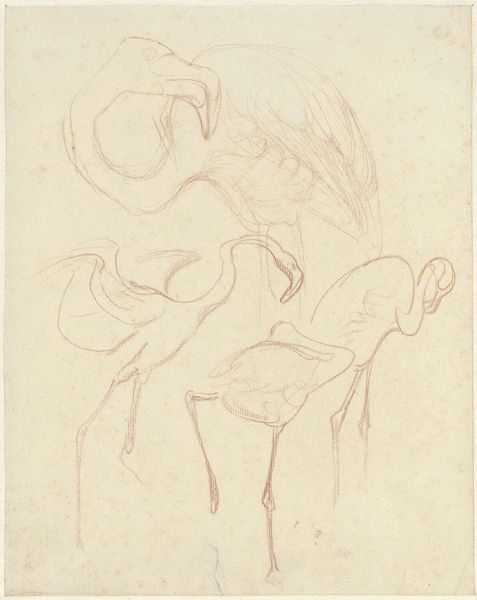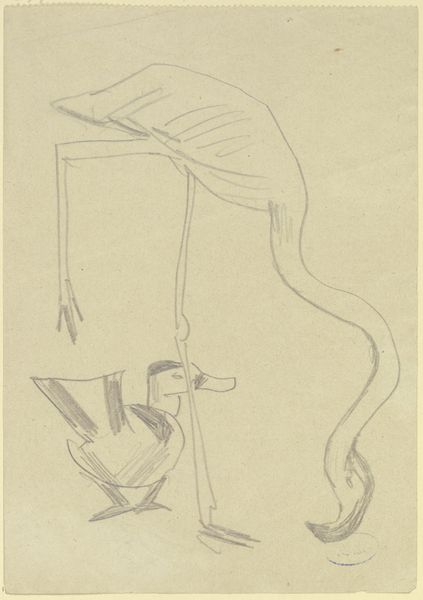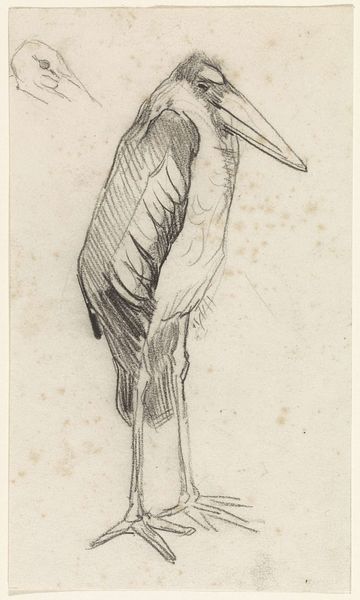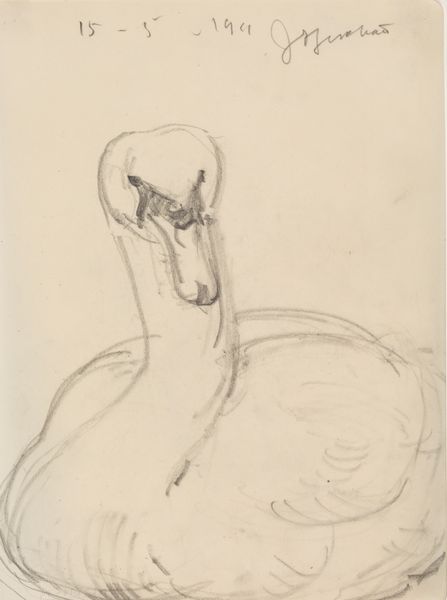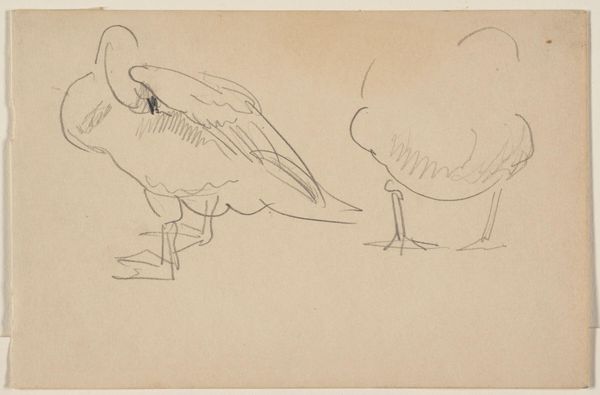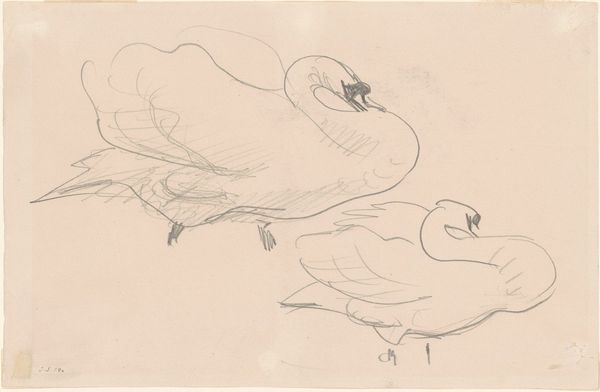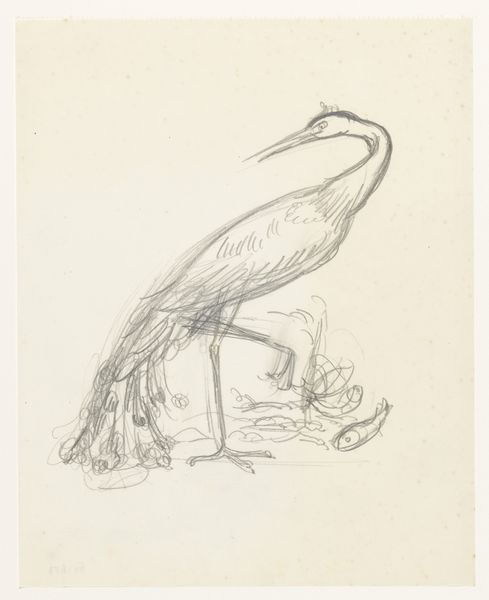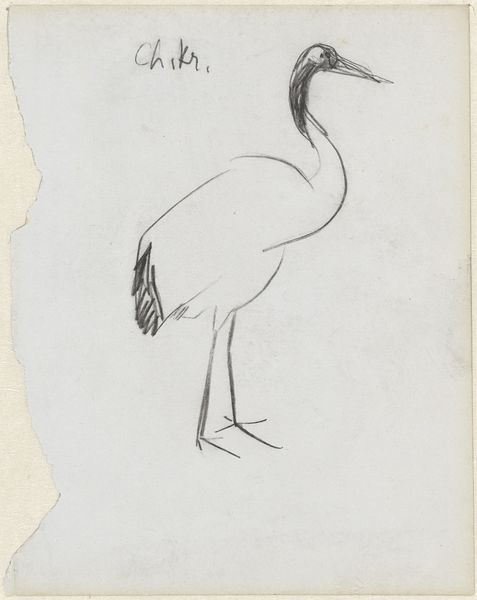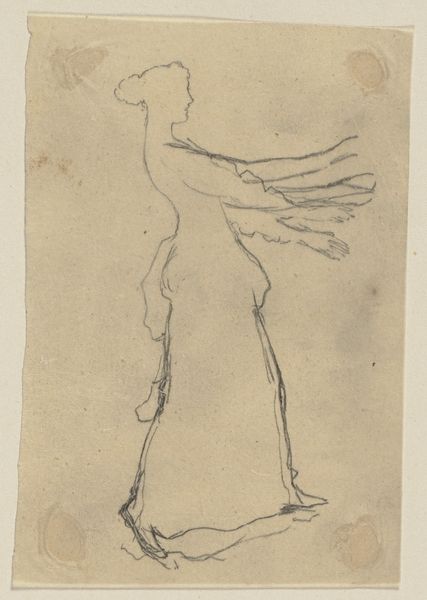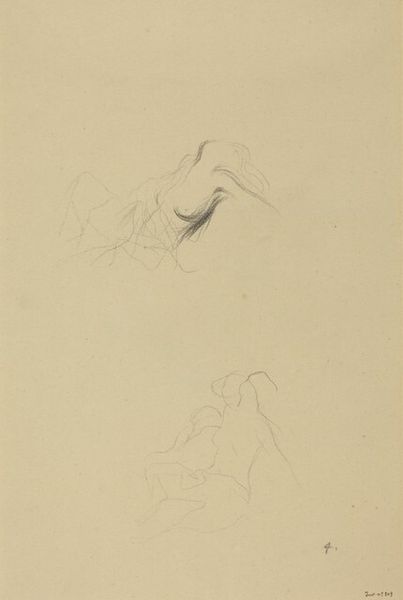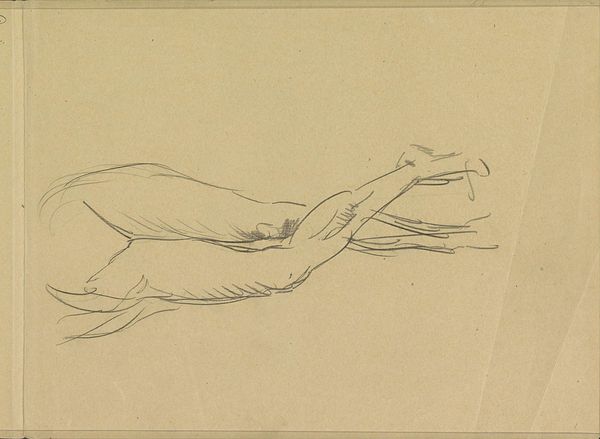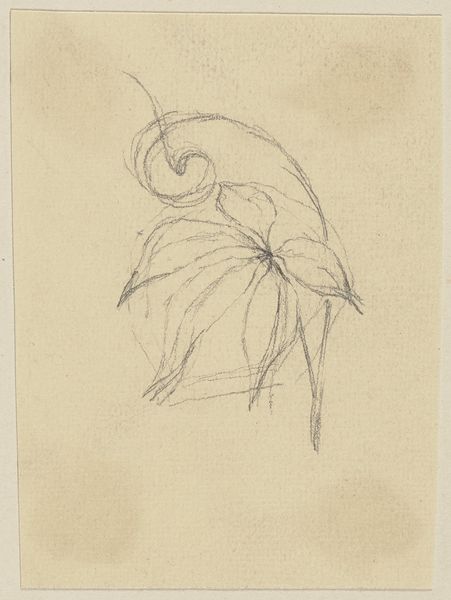
drawing, dry-media, pencil
#
drawing
#
animal
#
pencil sketch
#
figuration
#
dry-media
#
pencil
#
realism
Dimensions: height 286 mm, width 217 mm
Copyright: Rijks Museum: Open Domain
Curator: What a delicate and intriguing piece. Here we have "Two Studies of a Flamingo" by Theo van Hoytema, dating between 1873 and 1917. It’s a pencil drawing currently residing here at the Rijksmuseum. Editor: It feels quite serene. The gray background makes the flamingo’s outlines pop. It's like the birds are caught in a quiet moment of reflection. I’m drawn to the almost unfinished quality, it emphasizes a fleeting, observed reality. Curator: Van Hoytema seems particularly captivated by the flamingo’s form—especially its neck. Throughout art history, birds have often been depicted to symbolize freedom and even transcendence, and I wonder about that neck—that almost serpentine quality—if it carries symbolic weight here, relating perhaps to adaptation. Editor: That makes me consider the socio-political angle; in van Hoytema’s time, the rise of natural sciences, colonialism, and increasing encounters with exotic fauna were radically reshaping the human relationship to the animal kingdom, in both celebratory and exploitative ways. It speaks volumes about how human identity was configured then, with a presumed superiority at stake. I'm wondering about Hoytema's motivations when depicting this creature. Curator: I agree that's relevant, but it’s difficult to ignore that the flamingo as a creature—and by extension as an image—is tied to very specific geographical and cultural contexts. Its flamboyance can be linked to ideas of otherness. Hoytema presents two distinct renderings. What impact might that intentional juxtaposition produce for viewers? Does it challenge the idea of the singular? Editor: The flamingo, certainly, disrupts traditional European norms for fauna, as well as visual culture, especially since pink is typically coded as feminine. Hoytema could very well be subtly gesturing toward disrupting not only the animal world hierarchy but also its perceived place in social power dynamics. Curator: A drawing like this reminds me of how art acts as a cultural repository. These flamingo drawings transcend time, allowing us a peek into both natural history, cultural fascination and our enduring fascination with these animals and the artist’s mind at work. Editor: Precisely. By engaging with these pieces, we’re not merely observing sketches of flamingos. We are in fact confronting the intersections of our own colonial past with contemporary questions about global ecologies and animal ethics.
Comments
No comments
Be the first to comment and join the conversation on the ultimate creative platform.
